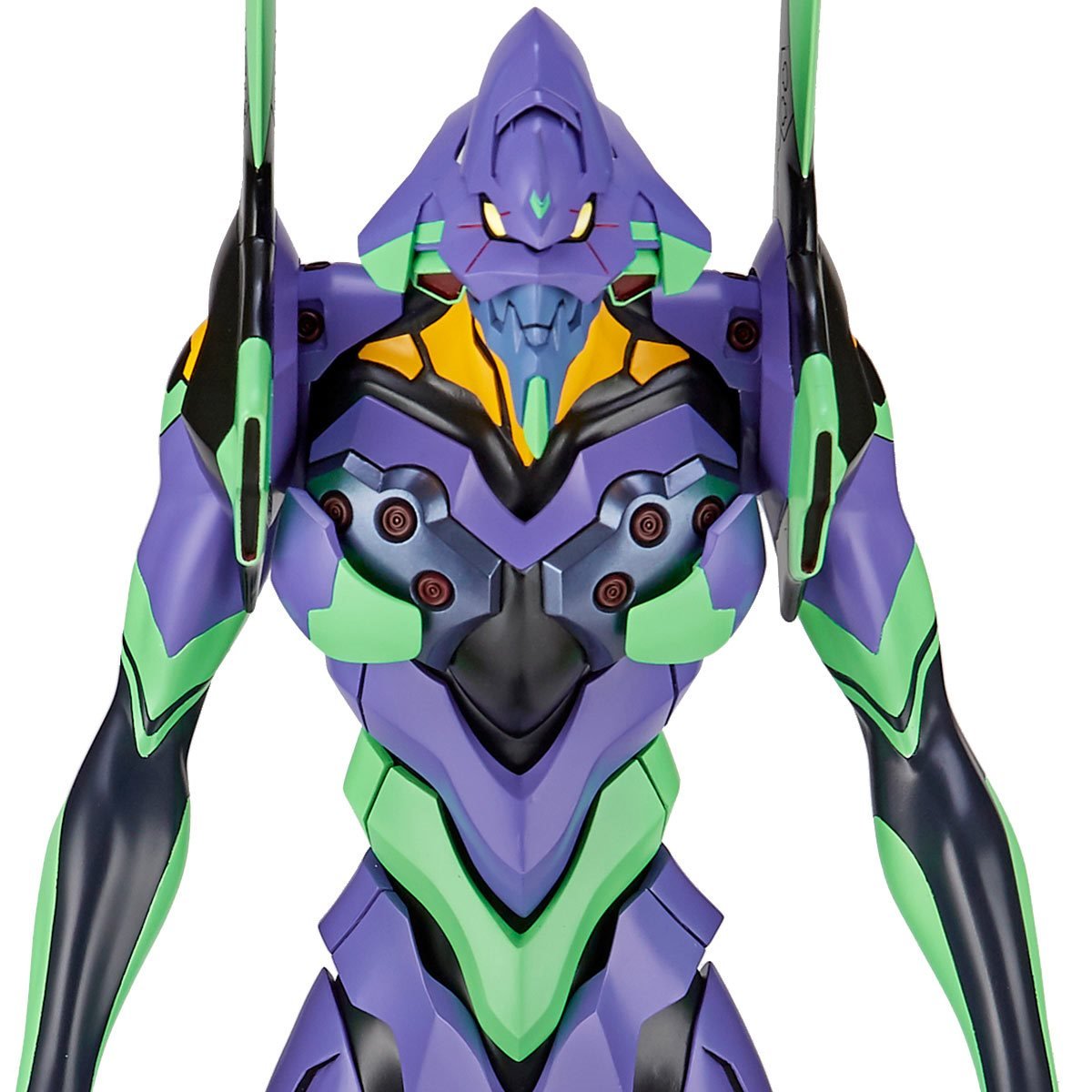Unraveling Evangelion: A Deep Dive Into Its Enduring Legacy
The world of Japanese animation is vast and varied, but few series have left as indelible a mark on popular culture and the hearts of fans as Neon Genesis Evangelion. Often simply referred to as "EVA," this iconic franchise transcends typical mecha anime, delving into profound psychological, philosophical, and religious themes that continue to spark discussion and analysis decades after its initial release. From its groundbreaking television series to its controversial films and recent cinematic reboots, EVA remains a touchstone for animation enthusiasts worldwide.
Our exploration will navigate the complex timeline of its various iterations, dissect its rich lore, and examine the profound impact it has had on both its creators and its audience. Prepare to journey through the layers of this multifaceted saga, understanding why Neon Genesis Evangelion isn't just an anime, but a cultural phenomenon that challenges, provokes, and ultimately, resonates deeply with the human experience.
Table of Contents
- The Genesis of EVA: A Timeline of Releases
- Deciphering EVA's Complex Lore and Symbolism
- The New Theatrical Editions: A Journey of Reconciliation
- Fan Creations and Unofficial Releases
- Beyond the Screen: EVA's Impact on Merchandise and Materials
- The Enduring Mystery of the Mark Series
The Genesis of EVA: A Timeline of Releases
The narrative of Neon Genesis Evangelion is as intricate as its lore, spread across various media and iterations. Understanding its evolution requires a clear grasp of its release timeline, which includes television series, films, and even a distinct manga adaptation. Each version offers a unique perspective or refinement, contributing to the franchise's rich tapestry.
The Original TV Series and Its Revisions
The journey began with the 1995 TV anime, "Neon Genesis Evangelion," comprising 26 episodes. This series introduced audiences to the post-apocalyptic world, the enigmatic Angels, and the young pilots tasked with defending humanity. Its initial broadcast was met with both critical acclaim and significant controversy, particularly regarding its abstract and ambiguous ending.
Following the TV series, in 1997, the theatrical film "Neon Genesis Evangelion: Death and Rebirth" was released. This was largely a compilation of the TV episodes, serving as a recap to prepare audiences for the true cinematic conclusion. It essentially strung together various TV episodes, offering a condensed overview of the plot leading up to the final events.
Interestingly, the "Data Kalimat" mentions a "second version of EVA" after The End of Evangelion. This refers to the 2003 TV Remastered version. This iteration focused on refining the pacing and coherence of the latter half of the TV series, specifically episodes after the 20th, which were known for their increasingly abstract and fast-paced narrative. The goal was to make the "wildly sprinting plot more coordinated," though it wasn't considered a standalone release but rather a polished version of the original. This remaster aimed to smooth out some of the rougher edges and narrative leaps that characterized the original broadcast's later episodes, providing a more cohesive viewing experience for those grappling with its complex themes.
The End of Evangelion and Beyond
The true cinematic conclusion to the original TV series arrived with the 1997 film "The End of Evangelion." This movie served as an alternative ending to the TV series' final two episodes, providing a more explicit, albeit still deeply symbolic and often disturbing, resolution to the Human Instrumentality Project. It was after this film's release that the story of Neon Genesis Evangelion was temporarily considered complete.
Years later, the franchise experienced a significant revival with the "New Theatrical Editions," beginning in 2007. These films, often referred to as the "Rebuild of Evangelion" series, offered a fresh take on the story, featuring new animation, plot developments, and character arcs. This new quadrilogy aimed to re-explore the themes and characters for a new generation while also providing a different narrative trajectory. The final film in this series, "Evangelion: 3.0+1.0 Thrice Upon a Time" (referred to as "终" in the data), brought a definitive conclusion to this cinematic saga.
Alongside the animated works, the manga adaptation by Yoshiyuki Sadamoto offered a distinct interpretation. The "Data Kalimat" notes that the manga was still being intermittently produced when "The End of Evangelion" was released, only reaching its fourth volume at that time. Sadamoto's manga, while following the broad strokes of the anime's narrative, presented his own vision of the story, often delving deeper into character motivations and offering different perspectives on key events. It serves as a complementary, yet unique, piece within the Neon Genesis Evangelion universe.
Deciphering EVA's Complex Lore and Symbolism
One of the most compelling aspects of Neon Genesis Evangelion is its dense and often ambiguous lore, heavily laden with symbolism drawn from various sources, particularly religious texts. This complexity encourages multiple interpretations and fosters endless fan discussions, making the series a fertile ground for academic and casual analysis alike.
Biblical Allusions and The Dead Sea Scrolls
The very name "EVA" itself sparks curiosity. The "Data Kalimat" poses the question: "Is EVA the 'Eve' from the Bible?" While the series never explicitly confirms this, the biblical allusions are undeniable and pervasive. From the names of characters (Adam, Lilith, Eva) to the concept of Angels and the Human Instrumentality Project, the show frequently draws upon Judeo-Christian mythology. The provided text humorously notes that EVA contains "a lot of ghostly religious stuff but chaotic and just for fun," suggesting that while these elements are visually and thematically prominent, their precise theological accuracy is secondary to their narrative impact.
Central to EVA's intricate plot is the concept of the "Dead Sea Scrolls" (死海文书). In the series' narrative, these ancient texts are presented as newly discovered "Gospel" (福音书), containing prophecies that dictate the course of humanity's future, including the arrival of the Angels and the potential for a catastrophic Third Impact. These scrolls serve as the foundational blueprint for NERV's actions and the overarching narrative, providing a sense of predestination and a mysterious, almost divine, grand plan that the characters are unwittingly or unwillingly following. The "Gospel" concept itself, also mentioned in the data, further ties into the series' exploration of salvation, revelation, and the ultimate fate of humanity.
The True Nature of the Evangelions and Angels
A common misconception among new viewers is that the Evangelion units are giant robots or advanced mecha. However, the "Data Kalimat" clarifies a crucial detail: "the EVA armors are all 'restraints' (拘束器) designed to constrain the EVA's power." This reveals that the Evangelions are not mere machines but living, biological entities of immense power, requiring heavy external restraints to prevent them from going berserk or unleashing their full, destructive potential. This explains why we often see a single EVA struggling against an Angel, with multiple units sometimes required for a decisive victory.
The Angels themselves are mysterious beings, often depicted as abstract and otherworldly, each possessing unique abilities and forms. Their arrival typically triggers devastating consequences, pushing humanity to the brink. A pivotal moment in the series, highlighted in the "Data Kalimat," is when EVA Unit-01 consumes the S2 Engine of the Fourteenth Angel. This act grants Unit-01 the ability of "self-regeneration," effectively making it an immortal being and blurring the lines between human technology and divine power. Furthermore, the data explicitly states that "Unit-01 has a soul," a critical revelation that underscores the biological and sentient nature of these beings, distinguishing them sharply from conventional mecha.
The organizations NERV and WILLE also play significant roles in the lore. The "Data Kalimat" provides insight into NERV's new logo, designed by mechanical designer Ikuto Yamashita. This logo symbolizes "the forbidden fruit about to be peeled by NERV," hinting at their controversial and often morally ambiguous goals related to human evolution and the Third Impact. Conversely, WILLE is presented as an organization whose very existence is "to peel NERV," indicating their opposition to NERV's agenda and their fight for humanity's survival against both Angels and NERV's machinations. The WILLE logo also features "four Angel rune marks" in its bottom left corner, further deepening the symbolic connections within the series' intricate design.
The New Theatrical Editions: A Journey of Reconciliation
The "New Theatrical Editions" of Neon Genesis Evangelion represent more than just a remake; they are a profound reflection on the series' legacy and its creator's personal journey. The "Data Kalimat" succinctly captures this by stating that the New Theatrical Editions are about "middle-aged Anno reconciling with his younger self, moving from depressing to healing." This perspective highlights a significant thematic shift from the original series' often bleak and introspective tone to one that ultimately offers a glimmer of hope and resolution.
For many fans, the original series, particularly its ending, was "depressing" and left them feeling emotionally drained. The New Theatrical Editions, especially the final film, "Evangelion: 3.0+1.0 Thrice Upon a Time" (终), sought to provide a sense of closure and emotional catharsis. When Shinji Ikari, the protagonist, utters the poignant line "Goodbye, all Evangelions," it signifies more than just the end of an anime. As the data suggests, it is a farewell to "that self hiding in the 'EVA cockpit' since 1995," symbolizing a release from past traumas, anxieties, and the inability to face the world. This meta-narrative, where the creator's personal growth is mirrored in the story's evolution, makes the Rebuild series a unique and deeply personal conclusion to the Neon Genesis Evangelion saga.
Fan Creations and Unofficial Releases
The passionate fanbase of Neon Genesis Evangelion has contributed to its enduring presence in various ways, sometimes leading to unofficial versions of the series. The "Data Kalimat" specifically mentions "《新世纪福音战士EVA-FANS 2005重制版》" (Neon Genesis Evangelion EVA-FANS 2005 Remastered Version). It clarifies that this version "has been circulating online, but it is not officially released." Instead, it was "re-produced by the 'EVA-FANS' subtitle group in 2005." This highlights the dedication of the community to the series, even going so far as to create their own enhanced versions. The personal advice in the data – "personal suggestion: the remastered version can be watched or not" – reflects the unofficial nature and varying quality of such fan-made projects, leaving it up to individual viewer preference.
Beyond the Screen: EVA's Impact on Merchandise and Materials
The influence of Neon Genesis Evangelion extends far beyond its animated narrative, permeating various aspects of popular culture, including merchandise. Interestingly, the "Data Kalimat" provides a surprising, yet practical, example of "EVA" in everyday life: as a material for slippers. This highlights the widespread recognition of the "EVA" acronym, even when it refers to something entirely different from the anime.
The data compares EVA material slippers to those made from PVC, noting that "EVA material slippers are lighter, firmer, and the key point is that EVA doesn't easily smell!" This is a significant advantage for footwear, as the data further elaborates: "I've worn my EVA ones for several months, completely odorless, and very comfortable to wear." The affordability is also a plus, with a pair costing "around twenty something yuan, lasting at least 1 year, and won't smell." This seemingly mundane detail underscores the broad impact of the series' name recognition, allowing for a humorous yet informative tangent into material science.
Expanding on the topic of shoe soles, the data also provides a general ranking of common materials and their characteristics:
- 1. Rubber Shoe Sole: Described as the "best" among shoe sole materials, known for its "wear-resistance, anti-slip properties, high-temperature resistance, and softness." It's the "first choice for many sports shoes."
- 2. TPU Shoe Sole: While not as detailed as rubber, TPU is listed as another common material, implying its widespread use in footwear.
This unexpected inclusion in the data demonstrates how deeply ingrained the "EVA" term has become, even when referring to the ethylene-vinyl acetate copolymer, a common material used in various products, including foam, packaging, and indeed, footwear. It's a testament to the cultural footprint of Neon Genesis Evangelion that its acronym can evoke recognition across such diverse contexts.
The Enduring Mystery of the Mark Series
Within the complex world of Neon Genesis Evangelion, particularly in the later New Theatrical Editions, new classifications of Evangelion units emerged, such as the "Mark series" machines. The "Data Kalimat" addresses a common fan question regarding the distinction between the "Mark series" and other EVA units. However, it provides a rather definitive, albeit frustrating, answer: "Actually, there is no official explanation, actually there is no official explanation, actually there is no official explanation." The repetition of this phrase three times emphasizes the lack of concrete information from the creators, leaving this aspect of the lore open to fan speculation and interpretation.
This ambiguity is characteristic of the series, which often leaves certain details unexplained, allowing viewers to piece together the puzzle themselves. The "Mark series" units often appear with distinct designs and operational parameters, suggesting a different origin or purpose compared to the original EVA-01, EVA-02, etc. Their unexplained nature adds another layer of mystique to the already enigmatic Neon Genesis Evangelion universe, contributing to its lasting appeal and the continuous discussions among its dedicated fanbase.
Conclusion
From its initial, mind-bending television run to its epic cinematic conclusions and various remasters, Neon Genesis Evangelion stands as a monumental achievement in animation. It is a series that defies easy categorization, weaving together complex lore, profound psychological drama, and striking religious symbolism. The journey through its different versions, the revelations about its living Evangelion units, and the deeply personal reconciliation reflected in its later films all contribute to its status as a cultural touchstone.
The enduring appeal of EVA lies not just in its stunning visuals or action sequences, but in its ability to provoke thought, challenge conventions, and resonate with the universal struggles of adolescence, identity, and the search for meaning. Whether you are a long-time fan who feels a pang of nostalgia for the series you "didn't have as a child" or a newcomer trying to decipher its many layers, Neon Genesis Evangelion offers an experience unlike any other. If you've been intrigued by this deep dive, we encourage you to revisit the series or explore the various fan discussions online. What are your favorite theories about the Angels, or your thoughts on the series' multiple endings? Share your insights in the comments below, and continue the conversation about this timeless masterpiece!

Evangelion: Every EVA Unit from the Original Series Explained

Rebuild of Evangelion Mega Sofubi Advance EVA Unit-01

File:Eva Mendes 2009.jpg - Wikimedia Commons